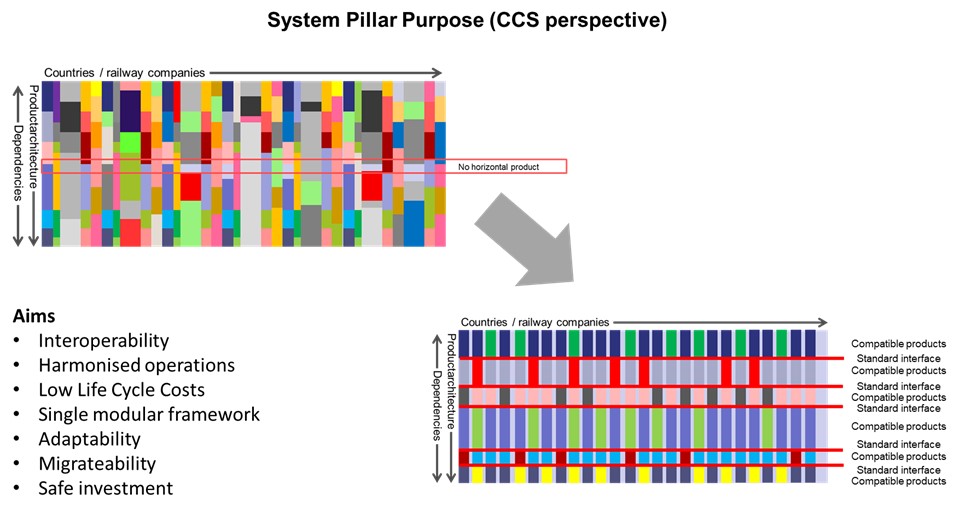TARGET ARCHITECTURE FOR CCS
European infrastructure managers have to optimize cost, reliability, safety, capacity, and fast migration. Assets have to be renewed while new technologies are introduced. Incompatibilities create high costs and investment risks. Inflexible old architectures bind the asset owners to technologies and processes which are not making use of the possibilities of today. Expensive migration challenges hinder the infrastructure managers to change their situation fast.
Triggered in 2018 by a joint initiative of EUG and sister organisation EULYNX (Reference CCS Architecture, RCA) and quickly followed by a similar initiative by some RU’s (Open CCS Onboard Reference Architecture, OCORA), the railway sector and the European Commission agreed to set up the System Pillar in Europe’s Rail Joint Undertaking (see chapter 4) to develop Technical Specifications for Interoperability (TSI’s) and other relevant standards for the future railway system. The development of specifications for CCS, beyond the present specifications for ERTMS in the TSI CCS, is an important element of the work in the System Pillar of Europe’s Rail Joint Undertaking, in which the EUG participates.
From the CCS perspective, the purpose of the System Pillar is as depicted below.

The main deliverables of the System Pillar are:
- An architecture framework and related operational concept for the overall railway system, with a focus on CCS, Traffic Management and Digital Automatic Coupler;
- A migration roadmap and
- Functional and technical specifications, in accordance with an agreed (and regularly updated) Standardisation and TSI input plan.
The main activities of EUG in the System Pillar are:
- Coordination/management of the System Pillar Consortium (a group of rail sector organisations who work together to develop the target architecture);
- Management of the framework contracts between EU-Rail and the System Pillar Consortium;
- Technical coordination for the railways for the development of CCS specifications and related TSI Maintenance activities;
- Contribution to the work in Operational Design, Architecture and Release Coordination, Migration and Roadmap, and Traffic Management Control & Supervision (EULYNX focuses on Trackside Assets Control & Supervision);
- Provision of additional experts (from members or subcontractors) for the work in the CCS domains and
- Participating in the System Pillar Steering Group of EU-Rail Joint Undertaking as technical advisor of CER, EIM, and the other railway representative organisations (observer).
For more information on the System Pillar of EU-Rail: https://rail-research.europa.eu/system_pillar